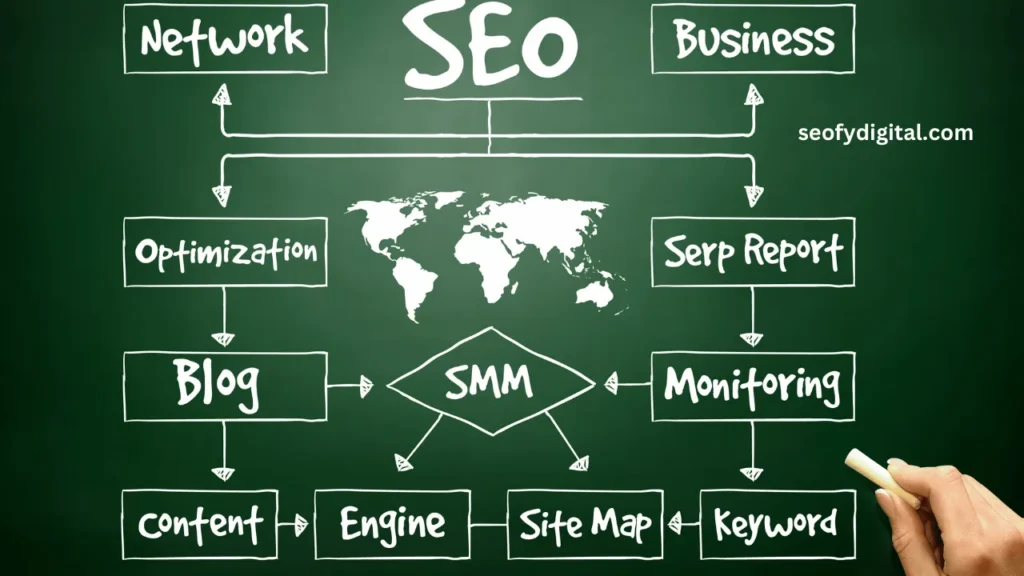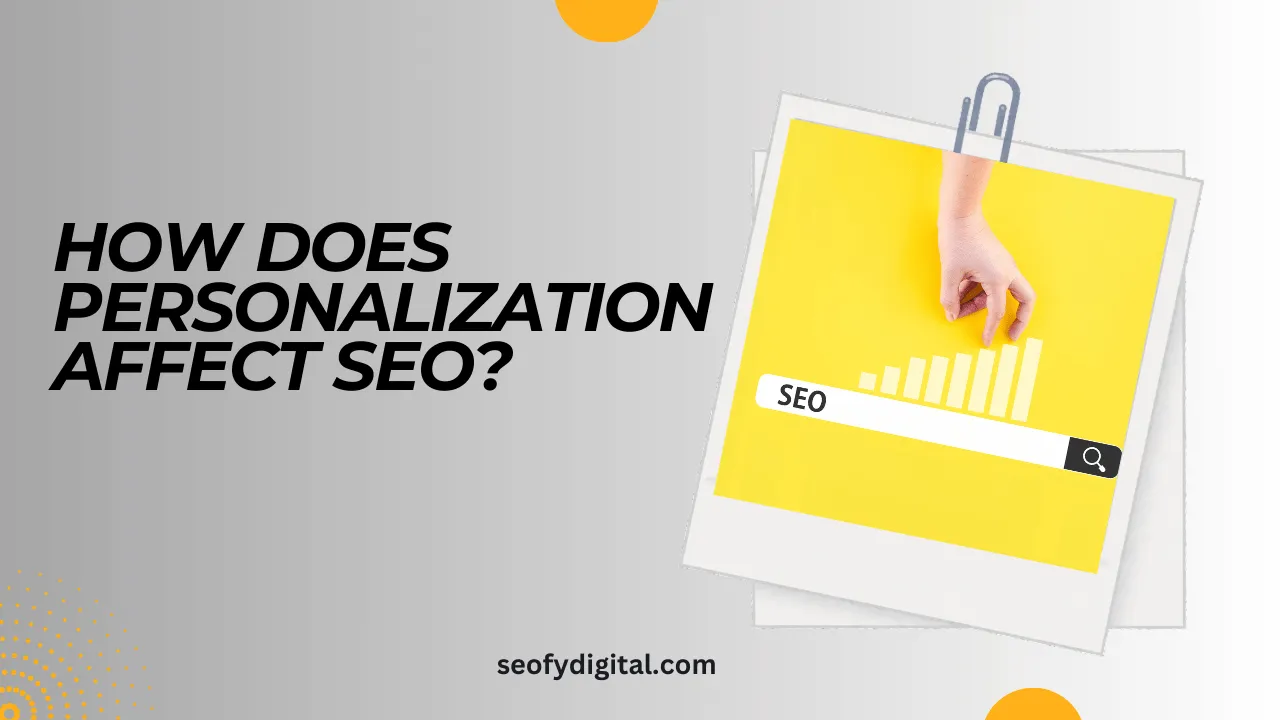In today’s digital landscape, standing out on search engines is more challenging than ever. With thousands of businesses vying for top rankings, it’s not enough to rely solely on keywords and backlinks.
Instead, personalization has emerged as a powerful way to connect with users and improve SEO performance. Imagine visiting a website that greets you by name, recommends products you’re interested in, and tailors content to match your preferences.
This isn’t just engaging – it’s a highly effective SEO strategy. Companies that adopt personalized experiences are seeing increased engagement, higher conversions, and even improved search rankings.
But why is personalization so impactful for SEO? For starters, search engines are continually evolving to understand and prioritize user intent. Personalization allows websites to enhance user experience by providing relevant content that keeps visitors engaged.
The result? Improved engagement metrics like click-through rates, time on site, and reduced bounce rates – all of which send positive signals to search engines. In this article, we’ll explore how personalization influences SEO, covering types of personalization, its benefits, best practices, and the challenges businesses face in implementing it.
Whether you’re new to SEO or looking for advanced strategies, this deep dive into personalization could be the key to boosting your site’s rankings and building lasting connections with your audience.

Contents
- 1 Understanding Personalization
- 2 Benefits of Personalization for SEO
- 3 Best Practices for Implementing Personalization
- 4 Challenges and Considerations
- 5 Conclusion
- 6 FAQs
- 6.1 1. How does personalization impact SEO?
- 6.2 2. Why is user data important for personalization?
- 6.3 3. What types of personalization exist in SEO?
- 6.4 4. How does personalization affect user engagement?
- 6.5 5. What are the privacy concerns with personalization?
- 6.6 6. How can personalization increase brand loyalty?
Understanding Personalization
Definition and Types: Personalization involves tailoring content and experiences to individual users based on their preferences, behavior, or demographics. There are several types of personalization, including content personalization (where specific content is shown to users based on past interactions), search personalization (where search results are customized based on user history), and product recommendations (suggesting items users might be interested in).
The Role of User Data: To enable effective personalization, collecting and analyzing user data is crucial. Data like browsing history, location, and purchase history help companies understand user preferences, allowing them to craft tailored experiences that meet specific needs.
Benefits of Personalization for SEO
Enhanced User Experience: When users encounter content that resonates with them, they’re more likely to stay on your site and explore further. Personalization boosts user experience by delivering relevant content, which ultimately leads to increased engagement and user satisfaction.
Improved Engagement Metrics: Personalization often results in better engagement metrics, such as higher click-through rates (CTR), longer time on site, and increased conversion rates. These metrics play a significant role in SEO, as search engines view high engagement as a sign of a valuable website.
Better Search Engine Rankings: By aligning content with user intent, personalization helps search engines better understand what your site offers and how relevant it is to individual searchers. This can lead to higher search engine rankings, as search engines prioritize sites that provide a positive user experience.
Increased Brand Loyalty: Personalized experiences foster a sense of connection and trust. Over time, these connections build brand loyalty, encouraging users to return to your site and even recommend it to others, further boosting your SEO through repeat traffic and positive word-of-mouth.

Best Practices for Implementing Personalization
Identify Target Audience: Knowing your target audience is essential to successful personalization. Understanding their interests, behaviors, and demographics allows you to tailor content that truly resonates.
Collect and Analyze User Data: Ethical and responsible data collection is the foundation of personalization. Use tools like Google Analytics to gather insights and understand what kind of content or products resonate most with your audience.
Create Personalized Content: Crafting personalized content can be as simple as using dynamic elements or as complex as using machine learning for recommendations. Techniques like A/B testing help refine these elements, ensuring you provide the best user experience.
Optimize for Mobile: With the rise of mobile users, it’s essential to ensure that your personalization strategies work seamlessly on mobile devices. Failing to optimize for mobile can result in missed opportunities and lower engagement rates.
Measure and Analyze: Personalization is an ongoing process, and tracking results is key to refining your strategy. Regularly monitor metrics like engagement rates, conversion rates, and SEO performance to identify areas for improvement.
Challenges and Considerations
Data Privacy and Security: Personalization relies heavily on user data, making data privacy and security essential considerations. Compliance with regulations like GDPR ensures you’re protecting user data and maintaining their trust.
Technical Implementation: Implementing personalization can be technically challenging, especially on large or complex websites. Ensuring that website architecture and back-end systems support dynamic content delivery is critical for a smooth user experience.
Balancing Personalization and Privacy: While personalization can improve engagement, there’s a fine line between helpful personalization and invasive tracking. Striking a balance between providing valuable experiences and respecting user privacy is crucial for ethical personalization.
Conclusion
Recap Key Points: Personalization is a powerful tool for enhancing SEO by creating tailored experiences that engage users and boost key metrics. From improved engagement to better rankings, personalization offers benefits that go beyond traditional SEO practices.
Future of Personalization: As AI and machine learning continue to advance, the future of personalization looks promising. These technologies will enable even deeper insights, allowing businesses to deliver increasingly relevant and timely content.
Final Thought: Embracing personalization isn’t just about improving SEO – it’s about building a brand that understands and values its audience. By integrating personalization into your strategy, you can create a user experience that drives engagement, builds loyalty, and ultimately leads to digital success.
FAQs
1. How does personalization impact SEO?
Personalization improves SEO by enhancing user experience, increasing engagement, and providing search engines with data that helps better understand user intent.
2. Why is user data important for personalization?
User data enables businesses to understand preferences and behavior, allowing them to deliver tailored experiences that improve user engagement and satisfaction.
3. What types of personalization exist in SEO?
Key types include content personalization, search personalization, and product recommendations, each tailored to match user preferences.
4. How does personalization affect user engagement?
By providing relevant content, personalization increases click-through rates, time on site, and conversion rates, leading to higher engagement.
5. What are the privacy concerns with personalization?
Privacy concerns arise from collecting user data. Compliance with regulations like GDPR and ethical data practices is crucial.
6. How can personalization increase brand loyalty?
Personalized experiences build trust and connect with users, encouraging repeat visits and long-term loyalty.








